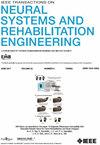Age, Motor Function, and Cognitive Function Influence Preferences for Telerehabilitation Mediated by a Social Robot Augmented With Telepresence
IF 5.2
2区 医学
Q2 ENGINEERING, BIOMEDICAL
IEEE Transactions on Neural Systems and Rehabilitation Engineering
Pub Date : 2025-07-23
DOI:10.1109/TNSRE.2025.3592020
引用次数: 0
Abstract
Social robot augmented telepresence (SRAT) is a potential approach to provide rehabilitative care to remote patients, while overcoming barriers to physical clinician-patient interaction. This study evaluated the preference of the subjects, stratified by age, motor impairment level and cognitive impairment level, for three modes of rehabilitation care delivery: face-to-face (FTF), classical telepresence (CT), and via social robot-augmented classical telepresence (SRAT). Forty-two participants completed the experiment that included assessments of upper-limb motor function and cognitive function followed by simulated rehabilitation interaction sessions, where the FTF interaction was the first, followed by CT and SRAT interactions in randomized order. Participants completed surveys on their impression and experience receiving simulated care in each mode. Survey responses were analyzed using descriptive statistics and regression methods. Although in-person interaction (FTF) was the preferred option, 71% of subjects enjoyed and preferred SRAT over CT and this preference was mediated by age and severity of motor and cognitive impairment. Our analysis suggests that young children will rank SRAT above CT except for when they have severe cognitive impairment, adults will prefer SRAT less as their upper-limb impairment becomes more severe, and adults over 70 years old will prefer SRAT less if they have moderate to no upper-limb motor impairment and no cognitive impairment.年龄、运动功能和认知功能对远程康复偏好的影响是由远程呈现增强的社交机器人介导的。
社交机器人增强远程呈现(SRAT)是一种为远程患者提供康复护理的潜在方法,同时克服了临床与患者物理互动的障碍。本研究以年龄、运动障碍程度和认知障碍程度为分层,评估受试者对面对面(FTF)、经典远程呈现(CT)和社交机器人增强经典远程呈现(SRAT)三种康复护理模式的偏好。42名参与者完成了实验,包括上肢运动功能和认知功能的评估,然后是模拟康复互动会话,其中FTF互动是第一个,然后是随机顺序的CT和SRAT互动。参与者完成了关于他们在每种模式下接受模拟护理的印象和体验的调查。采用描述性统计和回归方法对调查结果进行分析。尽管面对面互动(FTF)是首选,但71%的受试者喜欢并更喜欢SRAT而不是CT,这种偏好是由年龄和运动和认知障碍的严重程度介导的。我们的分析表明,幼儿除了有严重的认知障碍外,对SRAT的评分会高于CT;成人随着上肢功能障碍的加重,对SRAT的评分会降低;70岁以上的成年人如果上肢运动功能障碍和认知功能障碍均为中度至无,对SRAT的评分会降低。
本文章由计算机程序翻译,如有差异,请以英文原文为准。
求助全文
约1分钟内获得全文
求助全文
来源期刊
CiteScore
8.60
自引率
8.20%
发文量
479
审稿时长
6-12 weeks
期刊介绍:
Rehabilitative and neural aspects of biomedical engineering, including functional electrical stimulation, acoustic dynamics, human performance measurement and analysis, nerve stimulation, electromyography, motor control and stimulation; and hardware and software applications for rehabilitation engineering and assistive devices.

 求助内容:
求助内容: 应助结果提醒方式:
应助结果提醒方式:


